World Geography And Politics Daily News | 08 Jun 2023

Views (193)
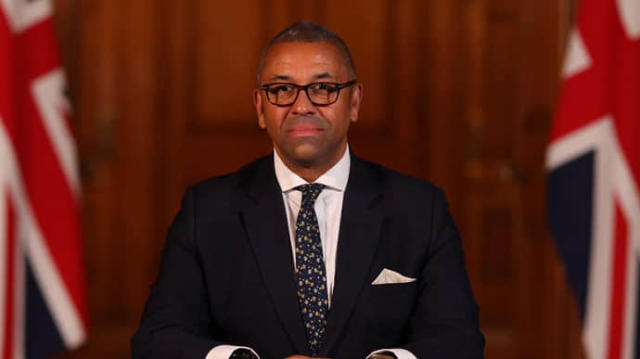
UN says Sudan orphanage evacuated after more than 70 children died amid unabated fighting
An orphanage in Sudan's war-torn capital has been evacuated following the deaths of more than 70 infants, toddlers and older children from hunger and illness over the past couple of months, the U.N. children’s agency and a local charity said Wednesday. The tragedy at the Al-Mayqoma orphanage made headlines late last month as fighting raged outside between Sudan’s military and the paramilitary Rapid Support Forces. The deaths have highlighted the heavy toll inflicted on civilians since mid-April when the clashes erupted between forces loyal to Gen. Abdel-Fattah Burhan and RSF forces led by Gen. Mohammed Hamdan Dagalo.
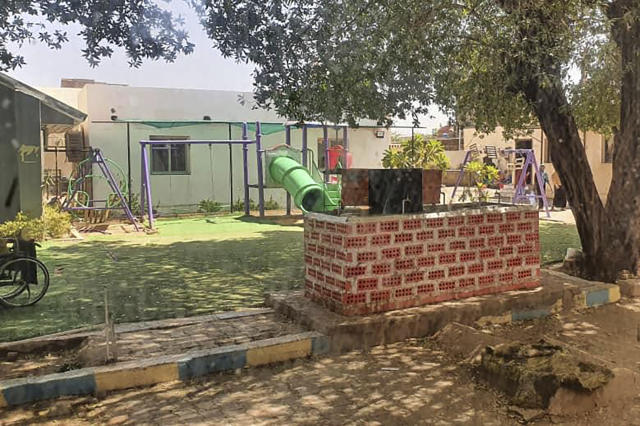
CAIRO (AP) — An orphanage in Sudan's war-torn capital has been evacuated following the deaths of more than 70 infants, toddlers and older children from hunger and illness over the past couple of months, the U.N. children’s agency and a local charity said Wednesday.
About 300 children at the Al-Mayqoma orphanage in Khartoum were transferred to a “safer location” elsewhere in the northeastern African nation, said Ricardo Pires, a spokesman for the U.N. children’s agency, UNICEF.
Sudan’s ministries of social development and health have taken charge of the children, while UNICEF has provided humanitarian support including medical care, food, educational activities and play, Pires said in an email to The Associated Press.
He said the children had received medical checks following their long journey to their new location, adding that “any child requiring hospitalization will have access to healthcare.”
The International Committee of The Red Cross, which helped the evacuation, said 70 caretakers had also been transferred with the children to the new facility.
“They (the children) spent incredibly difficult moments while fighting has been raging, without access to proper healthcare,” the ICRC said on Twitter late Wednesday. It attached a photo showing a woman on a bus feeding a baby formula.
Neither UNICEF nor the ICRC gave further details, including where and when were the children taken. However, Nazim Sirag, an activist who heads the local charity Hadhreen, said in a phone interview that they were ferried late Tuesday to a newly established facility in Madani, the capital city of Jazira province, about 135 kilometers (85 miles) southeast of Khartoum.
Sirag, whose charity led humanitarian efforts to help the orphanage and other nursing homes in Khartoum, said at least 71 children died at the Al-Mayqoma since the war in Sudan began on April 15.
Among the dead were babies as young as three months, according to death certificates obtained by the AP. The certificates listed circulatory collapse as a cause of death, but also mentioned other contributing factors such as fever, dehydration, malnutrition, and failure to thrive.
Their relocation followed an online campaign led by local activists and international charities, which intensified after the death of 26 children in two days at the orphanage in late May. The children had been trapped in the fighting for over seven weeks as food and other supplies dwindled. The facility was inaccessible because of the war had turned the capital and other urban areas into battlefields.
“The safe movement of these incredibly vulnerable children to a place of safety offers a ray of light in the midst of the ongoing conflict in Sudan,” Mandeep O’Brien, UNICEF Representative in Sudan, said in a statement. “Many millions of children remain at risk across Sudan."
The conflict has forced more than 1.9 million people to flee their homes, including around 477,000 who crossed into neighboring countries, according to the U.N.'s migration agency. Others remain trapped inside their homes, unable to escape as food and water supplies dwindle. The clashes have also disrupted the work of humanitarian groups.
There have been reports of sexual violence, including the rape of women and girls in Khartoum and the western Darfur region, which have seen some of the worst fighting in the conflict. Almost all reported cases of sexual attacks were blamed on the RSF, which didn’t respond to repeated requests for comment.
Rishi Sunak comes to Washington with Ukraine, economy and AI on agenda for Biden meeting
The war in Ukraine was top of U.K. Prime Minister Rishi Sunak’s agenda Wednesday as he started a two-day trip to Washington carrying the message that post-Brexit Britain remains an essential American ally in a world of emboldened authoritarian states. The U.S. and U.K. are the two biggest military donors to Ukraine, and the war will be the focus of Sunak’s meeting Thursday at the White House with President Joe Biden.
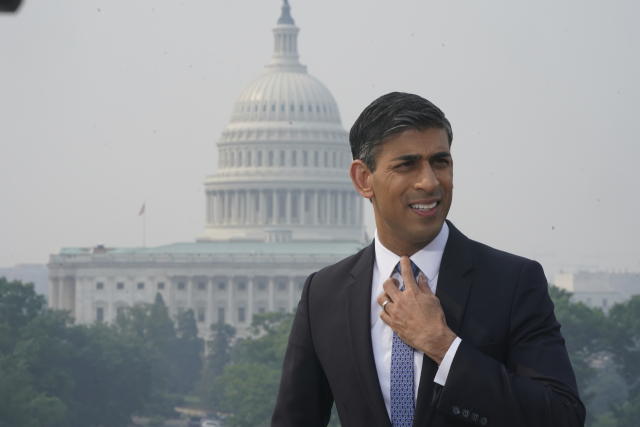
Sunak said Wednesday that U.K. intelligence services are still assessing the evidence, but “if it does prove to be intentional, it will represent a new low ... an appalling barbarism on Russia’s part.”
“Russia throughout this war has used as a deliberate active strategy to target civilian infrastructure," he told broadcaster ITV in Washington.
Sunak, 43, and 80-year-old Biden are very different politicians. Sunak is an heir of free marketeer Prime Minister Margaret Thatcher, and wary of big government interventions in the economy such as Biden’s Inflation Reduction Act, a huge package of tax breaks and subsidies aimed at boosting green industries.
But he’s also pragmatic, and has restored stability to Britain’s government after the turbulent terms of predecessors Boris Johnson and Liz Truss.
Johnson championed the populist Brexit movement and led Britain out of the European Union, a decision Biden has made clear he thinks has hurt the U.K. Truss was in office for less than two months, resigning after her rash tax-cutting plans sparked a financial crisis.
In his meeting with Biden, Sunak will push for closer economic ties between the U.S. and U.K., arguing that economic cooperation is as crucial to security as defense alliances.
“Just as interoperability between our militaries has given us a battlefield advantage over our adversaries, greater economic interoperability will give us a crucial edge in the decades ahead,” Sunak said ahead of the talks.
A British government official who previewed Sunak’s agenda on condition of anonymity said Sunak wants to discuss ways to protect supply chains from hostile actors and how to ensure China doesn’t corner the market on producing semiconductors and other key parts.
He won’t, however, push for a U.K.-U.S. free trade agreement. U.K. officials accept that long-cherished goal of Brexit supporters is currently on ice.
Sunak, a Stanford University MBA graduate who dreams of creating a British Silicon Valley, also wants to discuss the promise and perils of Artificial Intelligence. He’s eager to make sure the U.K. is not excluded from U.S.-EU talks on the subject.
Sunak has floated an idea that the U.K. could be a center for regulating the fast-moving technology, though no major news on that front is expected during his trip.
The prime minister’s spokesman, Max Blain, said Britain’s approach to regulation, “agile and able to adapt with the fast pace of this technology, makes the U.K. well placed to take a leading role here.”
Sunak held talks with congressional leaders, including Speaker Kevin McCarthy, on Capitol Hill and also was due to meet U.S. business executives. On Wednesday evening he’ll attend a Washington Nationals baseball game — though he won’t throw out the opening pitch, to the disappointment of the British media.
Sunak stressed he was never meant to throw out the pitch at the game, which includes military bands and a flyover to celebrate of U.S.-U.K. ties.
“My sport is more cricket than baseball, in any case,” he said.
___
Lawless reported from London.
Ukrainians ‘abandoned to die’ by Russia on banks of Dnipro
Vladimir Putin’s regime has been accused of leaving civilians to die on the occupied east bank of the Dnipro river, as surging floodwater caused by the destruction of a dam left thousands pleading for help on rooftops.
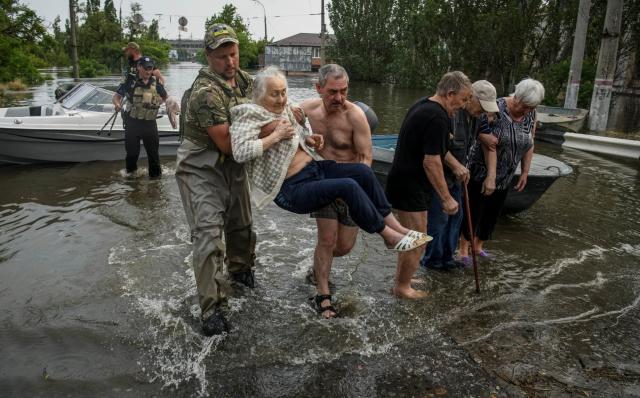
Denys Shmyhal, Ukraine’s prime minister, called on the Red Cross to step in to save tens of thousands of people who had been abandoned by local Russian authorities.
“The Russian occupiers don’t even make an effort to help these people, they have left them to perish,” he said in a video posted on Telegram.
While Ukraine reels from its worst man-made disaster since Chernobyl, it is the Russian-controlled east bank that has borne the brunt of the damage, according to satellite images and video footage.
In the neighbouring Kherson region, Russian occupying authorities said they had evacuated 1,500 people and set up temporary housing for twice that number.
Ukraine has said 42,000 people need evacuation, with around half that number on the Russian side of the river.
State-controlled television inside Russia praised the rescue effort as a reporter broadcast while rowing a boat through flooded streets.
Putin blamed Ukraine for the “barbaric act” of destroying the dam in a call with Recep Tayyip Erdogan, president of Turkey, saying it had triggered a “massive environmental and humanitarian disaster”. He said that Kyiv had organised the explosion at the behest of its Western allies.
Social media footage from Russian-occupied territory showed submerged neighbourhoods and people waving to drones through windows in their roofs.
“Russians are saying they’re organising an evacuation but where are the boats? Why did no one send in the boats for them?” said Nataliya, a native of Oleshky, who fled to Ukrainian-controlled territory earlier this year.
She said her husband’s parents, who still live there, had escaped in a dinghy. Others weren’t as lucky, she added.
“A friend’s godfather has an elderly grandma – they wanted to take her but she was already dead.” Videos emerging on Wednesday showed civilians rowing boats out of Oleshky as water lapped at corrugated roofs.
“Well, here is the left bank”, said a man in one video. “These guys are our rescuers. Please God get us out of here.”
Ukraine’s general staff on Wednesday said Russian troops had blocked evacuation efforts and shelled citizens fleeing Kherson.
The Red Cross, which had not responded to the request for aid from Ukraine’s prime minister on Wednesday night, warned that landmines were floating in the floodwater.
“We knew where the hazards were [before the dam burst],” said Erik Tollefsen, head of the weapon contamination unit at the International Committee of the Red Cross. “Now we don’t know.”
Emmanuel Macron, the French president, on Wednesday promised he would send aid “in the next few hours” to meet “immediate needs”.
Relatives of Oleshky residents have posted pleas for help on an online map, highlighting positions of family members. “Two people in the cellar, knee-deep in water”, reads one update, “Solontsy, 54 Zarechnaya, an old man with three dogs” goes another.
Yuliana, a mother of two from Kherson who fled to Germany last year, said she had lost contact with her two sisters in the village of Solontsy, just south of Oleshky.
The last thing she heard from the two women, aged 53 and 47, they were in the cellar of their two-storey home with water already knee deep.
Yuliana said she was called by a friend’s neighbour on Wednesday, saying they saw her sisters being evacuated by locals in a dinghy.
“No help was coming (from Russia) at all,” she said. “It’s just ordinary people who have found rubber boats somewhere and have been helping others.” Yuliana said her sisters had tried to escape Solontsy on Tuesday as soon as the dam broke but were turned back by Russian troops.
“The sisters said the [military] simply told the car to turn back and go,” she said. The Telegraph has not been able to verify the reports, which were echoed by reports in the opposition-aligned Russian media.
Washington warned there would be “likely many deaths” but on Wednesday there was no update from Ukrainian or Russian authorities.
Vladimir Leontyev, the Russian-installed mayor of Nova Kakhovka, said 100 people were trapped in the town and thousands of wild animals had been killed, in comments carried by the RIA state news agency.
He said 30,000 cubic metres of water was pouring into the town every second and it was at risk of contamination from the floods.
Volodymyr Zelensky, the Ukrainian president, said hundreds of thousands of people had been left without drinking water across the disaster zone, with tens of thousands stranded.
One artillery unit released footage of one of its drones, normally used for targeting Russian troops, delivering bottles of water to a trapped local.
“The biggest problem is the occupied area. It is apocalyptic,” said Olia Hercules, a chef and author who grew up in Nova Kakhovka.
Ms Hercules, who has been unable to contact relatives on the left bank for over a month said: “They are saying it is particularly bad in Oleshky and the nearby villages. They are saying there are bodies floating in the water.”
Yuliana, who often visited Solontsy, sobbed: “It was a beautiful, prosperous village. It just doesn’t exist anymore.”
Iran's president to visit three Latin American countries next week
Iranian President Ebrahim Raisi will visit Cuba, Nicaragua and Venezuela next week, Iran's state news agency IRNA announced on Wednesday, adding that the upcoming tour stemmed from invites from the presidents of each of the Latin American nations. IRNA said documents to expand bilateral cooperation will be signed between Iran and the three countries during Raisi's visit, mentioning economic, political and scientific issues, but without going into further detail.

MEXICO CITY (Reuters) - Iranian President Ebrahim Raisi will visit Cuba, Nicaragua and Venezuela next week, Iran's state news agency IRNA announced on Wednesday, adding that the upcoming tour stemmed from invites from the presidents of each of the Latin American nations.
IRNA said documents to expand bilateral cooperation will be signed between Iran and the three countries during Raisi's visit, mentioning economic, political and scientific issues, but without going into further detail.
The state news agency said Raisi will leave Teheran on June 11.
The three-country tour will give Raisi face time with three regional allies, each of whom lead leftists governments that have been accused by critics of human rights violations.
Iran and Venezuela are both members of the Organization of the Petroleum Exporting Countries (OPEC).
(This story has been corrected to say that the Iranian president will leave Teheran on June 11, not May 11, in paragraph 3)
(Reporting by Valentine Hilaire; Editing by David Alire Garcia)
Newer heart transplant method could allow more patients a chance at lifesaving surgery
Most transplanted hearts are from donors who are brain dead, but new research shows a different approach can be just as successful and boost the number of available organs. It's called donation after circulatory death, a method long used to recover kidneys and other organs but not more fragile hearts. Duke Health researchers said Wednesday that using those long-shunned hearts could allow possibly thousands more patients a chance at a lifesaving transplant — expanding the number of donor hearts by 30%.
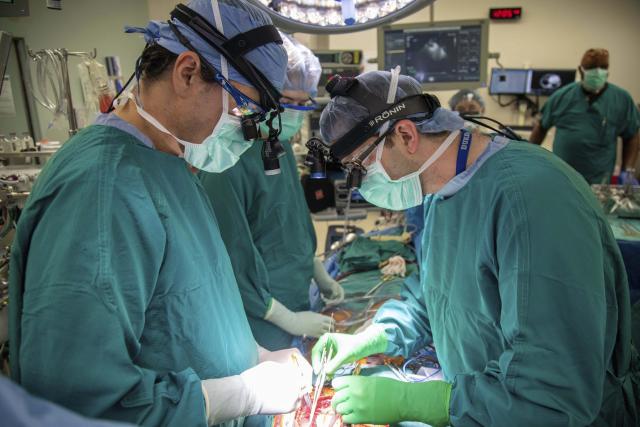
WASHINGTON (AP) — Most transplanted hearts are from donors who are brain dead, but new research shows a different approach can be just as successful and boost the number of available organs.
It's called donation after circulatory death, a method long used to recover kidneys and other organs but not more fragile hearts. Duke Health researchers said Wednesday that using those long-shunned hearts could allow possibly thousands more patients a chance at a lifesaving transplant — expanding the number of donor hearts by 30%.
“Honestly if we could snap our fingers and just get people to use this, I think it probably would go up even more than that,” said transplant surgeon Dr. Jacob Schroder of Duke University School of Medicine, who led the research. “This really should be standard of care.”
The usual method of organ donation occurs when doctors, through careful testing, determine someone has no brain function after a catastrophic injury — meaning they’re brain-dead. The body is left on a ventilator that keeps the heart beating and organs oxygenated until they’re recovered and put on ice.
In contrast, donation after circulatory death occurs when someone has a nonsurvivable brain injury but, because all brain function hasn’t yet ceased, the family decides to withdraw life support and the heart stops. That means organs go without oxygen for a while before they can be recovered — and surgeons, worried the heart would be damaged, left it behind.
What’s changed: Now doctors can remove those hearts and put them in a machine that “reanimates” them, pumping through blood and nutrients as they’re transported –- and demonstrating if they work OK before the planned transplant.
Wednesday’s study, conducted at multiple hospitals around the country, involved 180 transplant recipients, half who received DCD hearts and half given hearts from brain-dead donors that were transported on ice.
Survival six months later was about the same –- 94% for the recipients of cardiac-death donations and 90% for those who got the usual hearts, the researchers reported in the New England Journal of Medicine.
The findings are exciting and show “the potential to increase fairness and equity in heart transplantation, allowing more persons with heart failure to have access to this lifesaving therapy,” transplant cardiologist Dr. Nancy Sweitzer of Washington University in St. Louis, who wasn’t involved with the study, wrote in an accompanying editorial.
Last year, 4,111 heart transplants were performed in the U.S., a record number but not nearly enough to meet the need. Hundreds of thousands of people suffer from advanced heart failure but many never are offered a transplant and still others die waiting for one.
Researchers in Australia and the U.K. first began trying DCD heart transplants about seven years ago. Duke pioneered the U.S. experiments in late 2019, one of about 20 U.S. hospitals now offering this method. Last year, there were 345 such heart transplants in the U.S., and 227 so far this year, according to the United Network for Organ Sharing.
In the Duke-led study, nearly 90% of the DCD hearts recovered wound up being transplanted, signaling that it’s worthwhile for more hospitals to start using the newer method.
Sweitzer noted that many would-be donors have severe brain injuries but don’t meet the criteria for brain death, meaning a lot of potentially usable hearts never get donated. But she also cautioned that there’s still more to learn, noting that the very sickest patients on the waiting list were less likely to receive DCD hearts in the study.
Schroder said most who received DCD hearts already had implanted heart pumps that made the transplant more difficult to perform, even if they weren't ranked as high on the waiting list.
The study was funded by TransMedics, which makes the heart storage system.
___
The Associated Press Health and Science Department receives support from the Howard Hughes Medical Institute’s Science and Educational Media Group. The AP is solely responsible for all content.
Kremlin's threats will not stop UK from supporting Ukraine
UK Foreign Secretary James Cleverly has stated that Britain will not be deterred by Russia's "sabre-rattling" caused by the supply of Western weapons to Ukraine. Source: Cleverly in a comment to AFP on the sidelines of a ministerial meeting of the Organisation for Economic Co-operation and Development in Paris, reported by European Pravda Quote: "We have made a conscious decision that we cannot allow the escalation of rhetoric or the rattling of weapons by Vladimir Putin or the Kremlin to deter
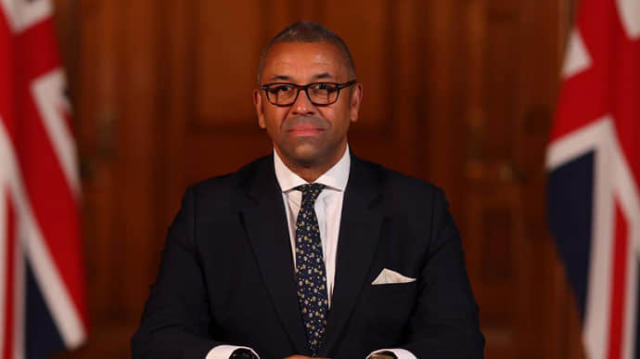
UK Foreign Secretary James Cleverly has stated that Britain will not be deterred by Russia's "sabre-rattling" caused by the supply of Western weapons to Ukraine.
Quote: "We have made a conscious decision that we cannot allow the escalation of rhetoric or the rattling of weapons by Vladimir Putin or the Kremlin to deter us from doing the right thing."
Details: He added that with Ukraine's successes on the battlefield, the Kremlin will be "more regularly and loudly" outraged, and we need to be prepared for this.
Background: Russian Foreign Minister Sergei Lavrov said that the West was allegedly preparing to continue escalating the war. In particular, he claimed that one of the modifications to F-16 fighter jets that Ukraine will receive is capable of carrying nuclear weapons.
On Tuesday, President Volodymyr Zelenskyy said that several states of the so-called fighter jet coalition had handed Ukraine concrete proposals to provide F-16s.
0 Likes
